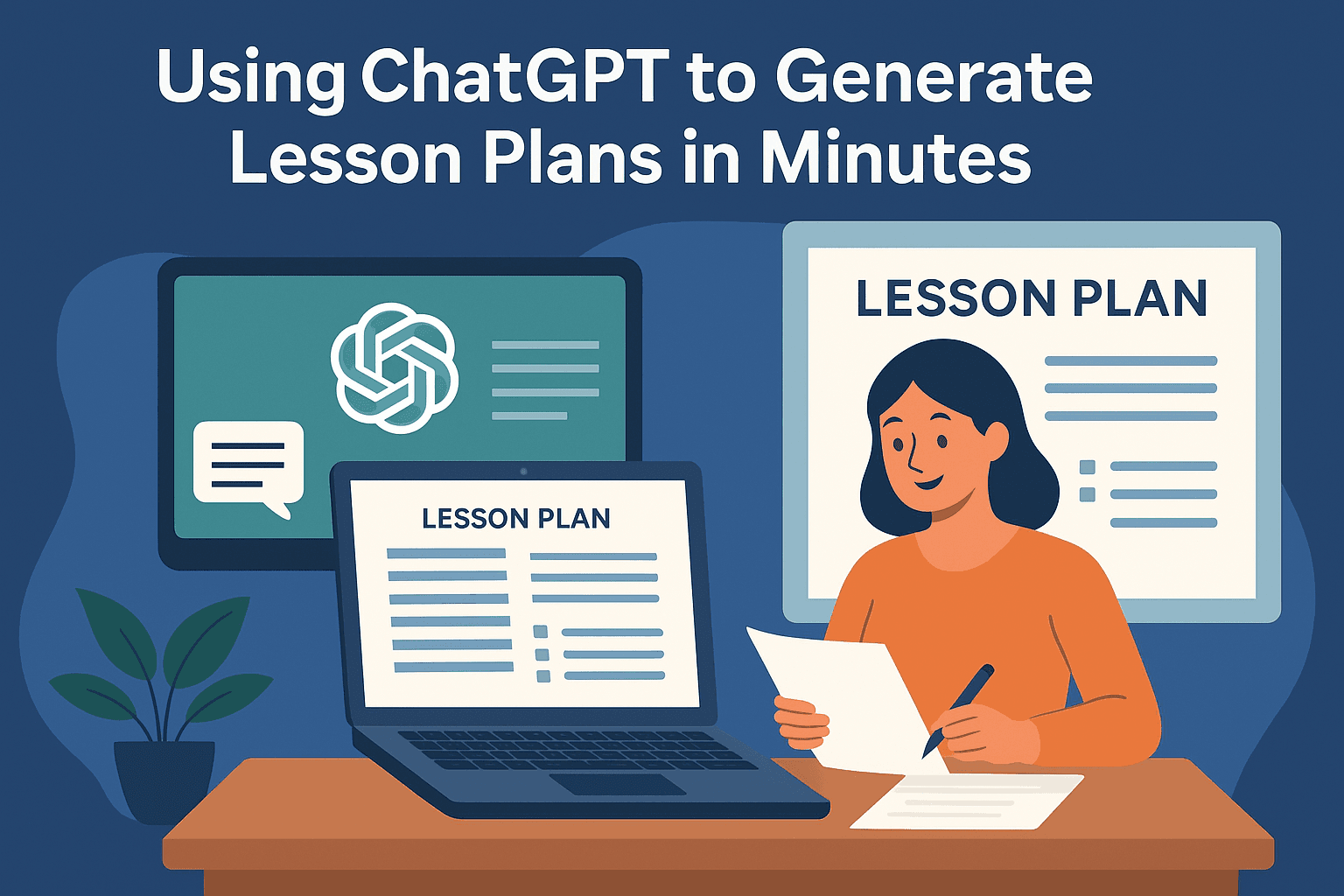
Using ChatGPT to generate lesson plans in minutes is rapidly becoming a game-changer for educators looking to streamline their workload while still delivering engaging and effective lessons. Whether you teach primary school, secondary education, or university courses, lesson planning is one of the most time-consuming parts of the job. Now, with the power of generative AI, teachers can save hours each week without sacrificing quality or creativity.
ChatGPT is a large language model capable of generating structured, detailed content based on natural language prompts. This makes it an ideal companion for educators looking to automate routine tasks like lesson creation, resource generation, and activity planning. With the right prompts, teachers can have custom lesson plans ready in minutes, tailored to specific age groups, curriculum standards, and learning styles.
How to Use Case Studies to Showcase Your Expertise
Why Use ChatGPT for Lesson Planning?
The reasons for using ChatGPT to generate lesson plans in minutes are both practical and pedagogical:
- Time Efficiency: Cut down hours of planning into a few minutes.
- Customisation: Tailor lessons to specific age groups, abilities, or outcomes.
- Variety: Get fresh ideas for activities, discussions, and assessments.
- Scalability: Generate plans across multiple subjects or year levels.
- Support for New Educators: Ideal for trainee or early-career teachers who need structure and inspiration.
How to Prompt ChatGPT for Lesson Planning
The output quality depends on how specific your prompt is. Here are examples of effective prompts:
Example 1 – Primary School Science
"Create a 60-minute Year 4 science lesson on the water cycle. Include objectives, starter activity, main teaching points, group task, and plenary."
Example 2 – Secondary English
"Generate a 45-minute lesson plan for Year 10 English Literature on the theme of power in Shakespeare’s ‘Macbeth’. Include differentiated tasks and a homework suggestion."
Example 3 – Higher Education
"Design a seminar outline for a university-level marketing course on digital consumer behaviour. Include key discussion questions and case study examples."
With these prompts, using ChatGPT to generate lesson plans in minutes becomes simple and effective.
Real-World Use Cases
1. Lesson Planning for a Busy Term
An upper primary teacher preparing for a new half-term uses ChatGPT to draft all science and history lessons for the next four weeks. She provides her curriculum outcomes and student levels. Within an hour, she has a complete sequence of lessons, each with engaging activities, links to online resources, and built-in assessment checkpoints.
2. Differentiation Made Easy
A secondary school maths teacher wants three versions of the same lesson: one for high-achievers, one for the core group, and one for learners with additional needs. ChatGPT produces three scaffolded versions of a geometry lesson, saving hours of manual differentiation.
3. Emergency Supply Lessons
A teacher assistant covering a class last-minute needs a quick lesson on healthy eating for Year 2 students. In less than two minutes, ChatGPT provides a fun, age-appropriate plan with visuals and storytelling elements.
Benefits of Using ChatGPT to Generate Lesson Plans in Minutes
- Speed & Convenience: With a well-crafted prompt, you receive a detailed lesson plan in under 60 seconds.
- Adaptability: Modify tone, language, or difficulty level instantly.
- Cross-Curricular Support: Great for integrating subjects or planning thematic weeks.
- Idea Generation: If you're experiencing planner’s block, AI can inspire creativity with fresh approaches.
- Built-In Reflection: Ask ChatGPT to include plenaries, formative assessments, or reflective tasks
Tips for Best Results
- Refine Prompts: The more context you give, the better the output.
- Review & Personalise: Use AI-generated content as a foundation—review, adapt, and add your personal teaching style.
- Use for Collaboration: Share drafts with colleagues and co-plan faster.
- Save Prompts: Reuse and tweak prompts for different units or year groups.
Ethical and Practical Considerations
While using ChatGPT to generate lesson plans in minutes is efficient, it’s important to:
- Ensure accuracy of content, especially in technical subjects.
- Uphold academic integrity—don’t copy blindly.
- Use AI to assist, not replace, your professional judgement.
- Maintain data privacy if using student information in prompts.
Final Thoughts
In a profession where time is always in short supply, using ChatGPT to generate lesson plans in minutes can be a transformational tool. It empowers teachers to reclaim valuable time, bring creativity into their classrooms, and respond quickly to dynamic learning needs.
Whether you’re a veteran educator or a new teacher just starting out, embracing generative AI tools like ChatGPT can elevate your planning process and enrich the learning experience for your students.
Visit The Case HQ for 95+ courses
Read More:
Case Study Writing: Turning Real-World Scenarios into Educational Tools
Using Case Studies to Drive Business Growth: Strategies and Examples
7 Steps to Writing Case Studies That Highlight Problem-Solving Skills
6 Steps to Crafting Case Studies for Marketing: Engage Your Audience Effectively
Comparative Case Studies: Analyzing Success Across Different Industries
The Role of Case Studies in Environmental Impact Assessments
Why Research Publications are Critical in Understanding Global Health Trends
Exploring the Real-World Impact of Case Studies in Urban Planning
Breaking Down a Case Study: An Interactive Walkthrough
How to Cite Case Studies and Research Publications in Your Work
The Intersection of Ethics and Case Studies in Research
https://thecasehq.com/time-saving-power-of-using-chatgpt-to-generate-lesson-plans-in-minutes/?fsp_sid=2086
Comments
Post a Comment